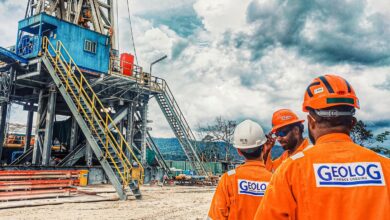Hand-picked components enable Marathon, ConocoPhillips to build fit-for-purpose MPD system for GOM project
By Kelli Ainsworth, Editorial Coordinator

In 2013, Marathon Oil and ConocoPhillips decided to retrofit the Maersk Valiant drillship for managed pressure drilling (MPD). Installation of the MPD equipment began in 2014, while the drillship made its way to the US Gulf of Mexico from the shipyard in South Korea. By June 2015, the rig was fully equipped for MPD, finished with field trials and ready to begin drilling. “What this has shown us is that MPD can be added to existing rig packages while the rig is in operation,” Dennis Moore, Senior Technical Consultant for Marathon, said in a presentation at the 2016 SPE/IADC Managed Pressure Drilling and Underbalanced Operations Conference in Galveston, Texas, on 12 April.
Because Marathon and ConocoPhillips had previous experience with the applied backpressure variety of MPD, they opted to equip the Maersk Valiant for this form of MPD. However, equipment selection was limited, and many of the systems on the market did not address some of the operators’ challenges, Mr Moore said. “We didn’t see any systems out there that satisfied our needs. They were too small, we weren’t happy with the choke controls, the configuration just didn’t fit what we needed.”
One of the primary needs that was identified for this project was having a system that could handle both high and low flow rates, large cuttings and a high cuttings volume. The operators also wanted more accurate flow measurements. Rather than just counting pump strokes, they wanted a system that had flow meters on all pumps and could measure both the density and flow rate of all fluids in the well with a high level of accuracy. They also wanted to be able to feed this data into the hydraulics model. “By feeding data directly from the inflow meters into the hydraulic model, the chokes can adjust automatically for changes in density,” Mr Moore said.
While selecting MPD equipment for this project, Marathon and ConocoPhillips found that there no single provider that offered a package that met every single one of their needs. The companies opted for a piecemeal approach, ordering different components from different providers. “By selecting each of these components separately, it’s possible to get a much better total package than you can get from a single-source provider,” Mr Moore said. This approach also made it easier to upgrade individual components when needed, without having to upgrade the entire system, he added.
In the end, the companies were able to implement an MPD system that utilized an intelligent predictive control (IPC) algorithm to manage the chokes, rather than proportional integral derivative (PID) control used on previous systems. IPC systems are easier to use, Mr Moore said, and it allows input from inflow meters into the hydraulic system. The IPC system can be run manually or with various degrees of automation. “You can select a pressure and depth, and it will maintain that even when there are changes in mud weight or changes in pump speed,” Mr Moore said. This allows control of surface pressures with 10 psi. This MPD system is also able to detect influxes of only a few gallons, he added.
For the contractor, benefits include increased marketability for the rig. “The contractor was keen to do this because this gave their rig additional capability and a marketing advantage,” Mr Moore said.




